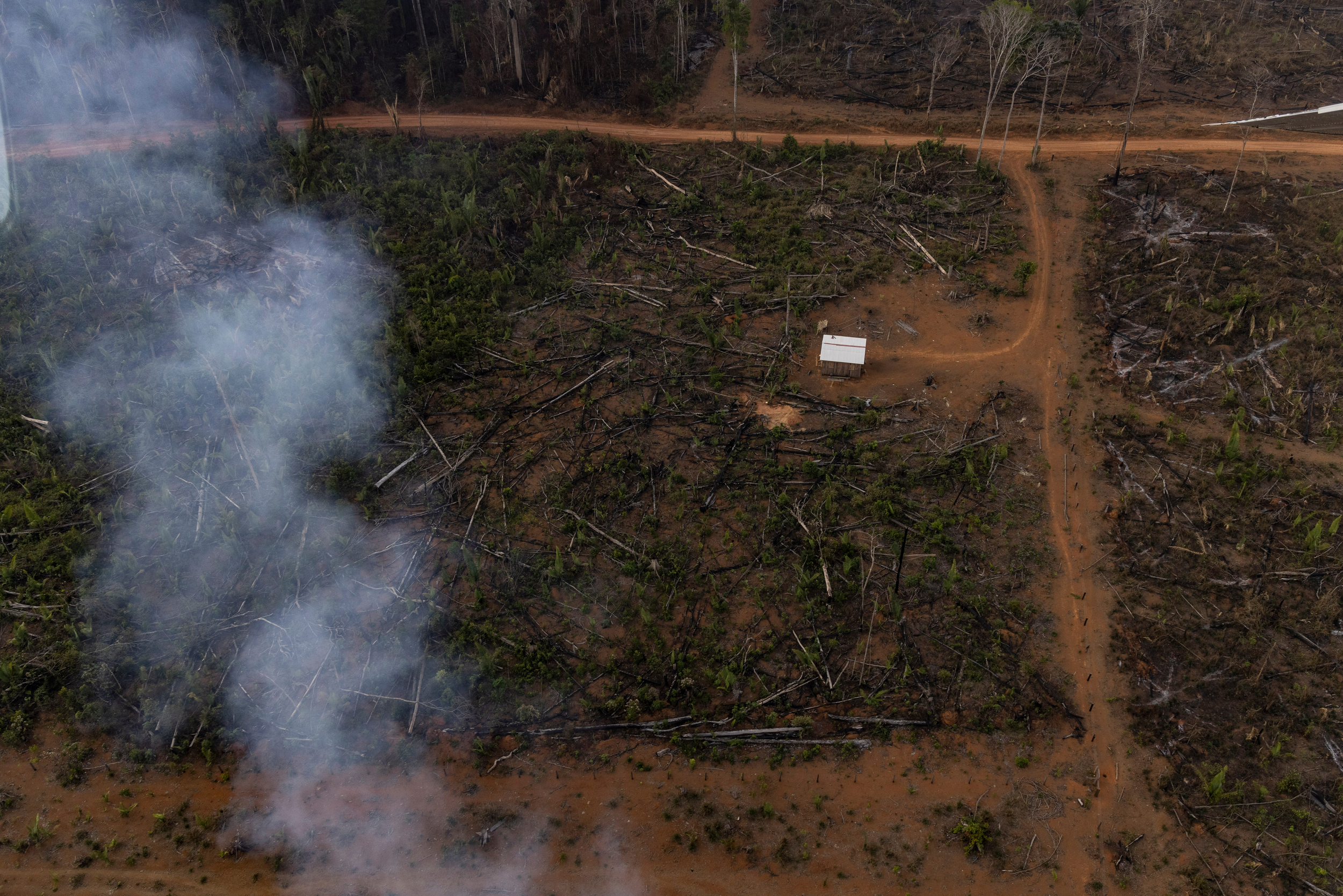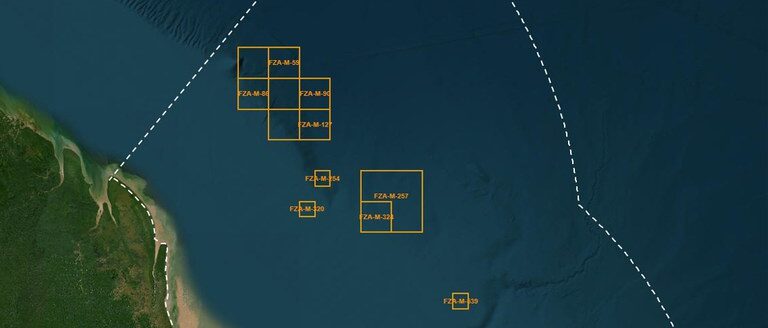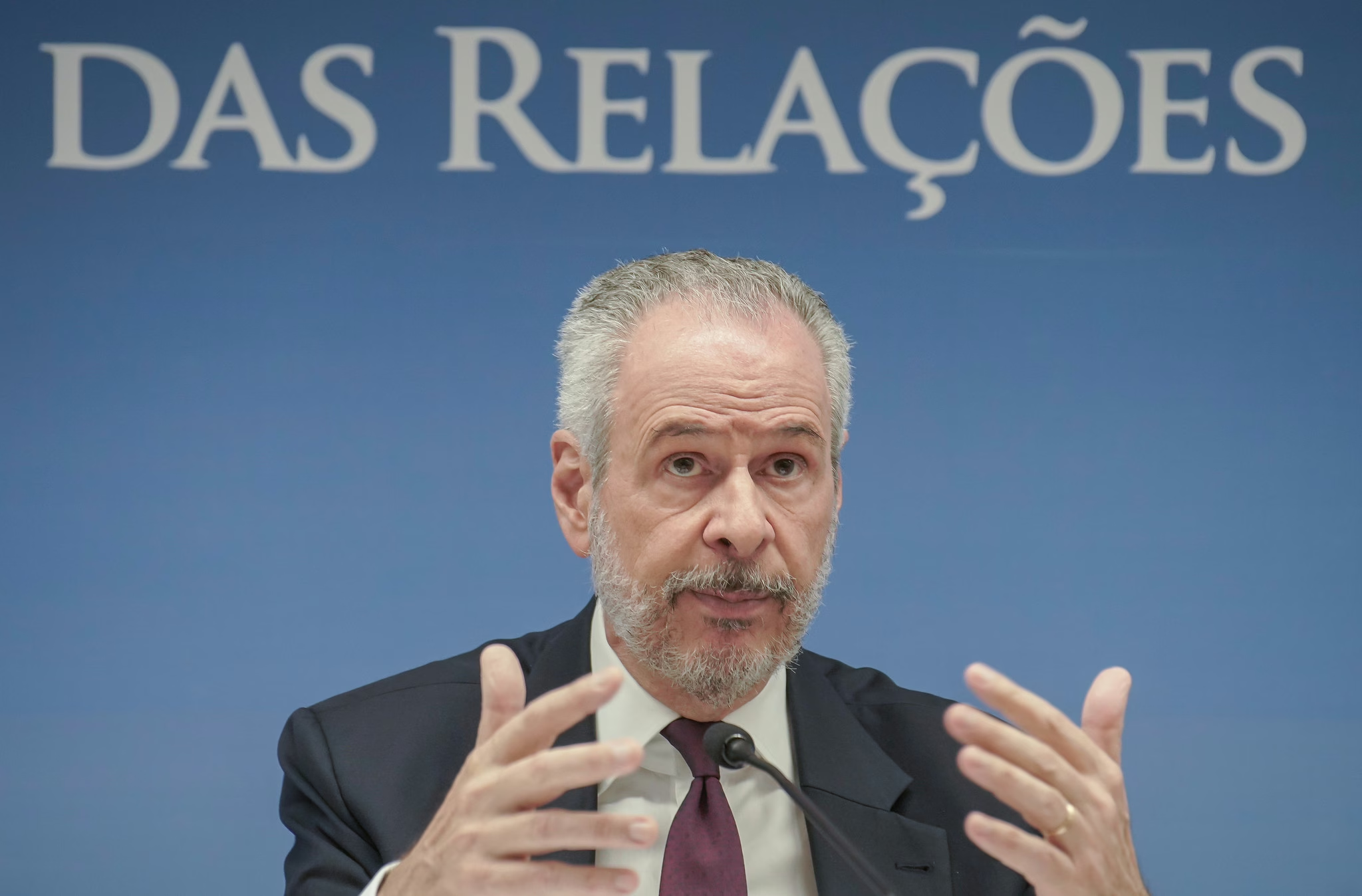For five days, between September 13 and 17, the Amazônia em Chamas Alliance confirmed the warning — and concern — of many researchers: The southern Amazon, the largest and most conserved area in the forest, is the new frontier of deforestation. “This region stands out for the rapid advance of deforestation, which is increasingly entering into well-preserved territories that are vital to mitigate the climate crisis and prevent the collapse of biodiversity on the planet,” says Cristiane Mazzetti, of Greenpeace, an organization that takes part in the alliance alongside Amazon Watch and the Climate Observatory.
Researchers, journalists and three Brazilian artists participated in the expedition — Rafael Cardoso (actor), Giovanna Lancellotti (actress) and Vitão (singer and composer). The group departed from Porto Velho, the second municipality in the number of fires — with 2,700 heat spots, from January 1st to September 18, according to data from INPE (National Institute for Space Research) — for Lábrea, the country’s record holder on forest fires, with 2,946 outbreaks in the same period. After flying over the Jacareúba Indigenous Land (AM) and the Mapinguari National Park (AM and RO), it was possible to identify extensive deforested areas, ranging from 1,550 to 2,450 hectares, equivalent to 2,012 and 3,181 soccer fields respectively, and which are among the five largest deforested areas ever recorded in the state of Amazonas.
Under the Bolsonaro administration, Amazonas surpassed Rondônia as the third state with the worst level of deforestation, according to Inpe’s Prodes system. “We witnessed large-scale forest destruction, including large deforestation polygons, active heat spots and illegal airstrips. In Porto Velho, we caught sight of large areas for the cultivation of grains, an activity that is becoming increasingly consolidated in northern Rondônia, and has been recently introduced in southern Amazonas, with soybean planting in Humaitá,” says Mazzetti, who has been tracking these activities.
On land, the expedition passed through Candeias do Jamari, the second most deforested municipality in Rondônia, according to data of August 2020 and July 2021, only surpassed by Porto Velho. There, the group found sawmills and multiple trucks loaded with giant tree logs, as well as cattle grazing near newly burned areas. “We saw all the stages of the deforestation process one after the other: The extraction of high-value timber, the burning of vegetation to grow pasture, and cattle herds occupying areas that until recently were covered by forest,” says Rômulo Batista, spokesperson for the Greenpeace Brazil Amazon campaign.
In this region, there are two Conservation Units (UCs) — the Flona Jacundá and the Samuel Ecological Station — which have already registered invasions. According to specialists, the approval of the bill that reduced by 80% the limits of the Jaci-Paraná extractive reserve (Resex) by Governor Marcos Rocha, which benefited invaders, may have further driven invasions to the UCs. The Resex was the Conservation Unit that most suffered from fires in Rondônia this year, and the situation is expected to become even more dramatic in the coming months.
Ane Alencar, science director at the Amazon Environmental Research Institute (IPAM), was part of the group and was astounded by the indiscriminate occupation of public lands. “Deforesting large areas requires a lot of investment in equipment and logistics, which goes to show that invaders are going all out onto public lands and occupying them in an indiscriminate and highly capitalized way,” she observes. According to the researcher, one of the most notable specialists in the dynamics of forest fires in the country, another issue that stands out is that some areas which were deforested in previous years are abandoned, with no signs of agricultural activities being carried out. “In other words, they are using deforestation to speculate on public land.”
Stela Herschmann, climate policy specialist at the Climate Observatory, also accompanied the expedition and noted the impact of the loss of forest. “While other nations use less carbon to develop themselves, Brazil goes against the grain, betting on deforestation, which is its main source of greenhouse gas emissions. Deforestation, fires, land grabbing and mining take place illegally, neither boosting development on the region nor distributing wealth to the peoples of the forest. We are literally burning our future in exchange for nothing.”
Images from the flyover are available here. Editorial and not-for-profit use is free, provided due credit is given to: Victor Moriyama/Amazônia em Chamas (photos) and Fernanda Ligabue/Amazônia em Chamas (videos).
About the Amazônia em Chamas Alliance: a partnership between Amazon Watch, Greenpeace Brazil, and the Brazilian Climate Observatory that carries out flyovers to track and produce data on green areas that have been deforested and/or threatened by deforestation, fire and illegal mining.
Press Information
Camila Rossi – Amazon Watch: [email protected]; +55 11 98152-8476
Solange A. Barreira – Climate Observatory: [email protected]; +55 11 98108-7272
Karen Mota – Greenpeace Brazil: [email protected] ; +55 11 97252-6867
For five days, between September 13 and 17, the Amazônia em Chamas Alliance confirmed the warning — and concern — of many researchers: The southern Amazon, the largest and most conserved area in the forest, is the new frontier of deforestation. “This region stands out for the rapid advance of deforestation, which is increasingly entering into well-preserved territories that are vital to mitigate the climate crisis and prevent the collapse of biodiversity on the planet,” says Cristiane Mazzetti, of Greenpeace, an organization that takes part in the alliance alongside Amazon Watch and the Climate Observatory.
Researchers, journalists and three Brazilian artists participated in the expedition — Rafael Cardoso (actor), Giovanna Lancellotti (actress) and Vitão (singer and composer). The group departed from Porto Velho, the second municipality in the number of fires — with 2,700 heat spots, from January 1st to September 18, according to data from INPE (National Institute for Space Research) — for Lábrea, the country’s record holder on forest fires, with 2,946 outbreaks in the same period. After flying over the Jacareúba Indigenous Land (AM) and the Mapinguari National Park (AM and RO), it was possible to identify extensive deforested areas, ranging from 1,550 to 2,450 hectares, equivalent to 2,012 and 3,181 soccer fields respectively, and which are among the five largest deforested areas ever recorded in the state of Amazonas.
Under the Bolsonaro administration, Amazonas surpassed Rondônia as the third state with the worst level of deforestation, according to Inpe’s Prodes system. “We witnessed large-scale forest destruction, including large deforestation polygons, active heat spots and illegal airstrips. In Porto Velho, we caught sight of large areas for the cultivation of grains, an activity that is becoming increasingly consolidated in northern Rondônia, and has been recently introduced in southern Amazonas, with soybean planting in Humaitá,” says Mazzetti, who has been tracking these activities.
On land, the expedition passed through Candeias do Jamari, the second most deforested municipality in Rondônia, according to data of August 2020 and July 2021, only surpassed by Porto Velho. There, the group found sawmills and multiple trucks loaded with giant tree logs, as well as cattle grazing near newly burned areas. “We saw all the stages of the deforestation process one after the other: The extraction of high-value timber, the burning of vegetation to grow pasture, and cattle herds occupying areas that until recently were covered by forest,” says Rômulo Batista, spokesperson for the Greenpeace Brazil Amazon campaign.
In this region, there are two Conservation Units (UCs) — the Flona Jacundá and the Samuel Ecological Station — which have already registered invasions. According to specialists, the approval of the bill that reduced by 80% the limits of the Jaci-Paraná extractive reserve (Resex) by Governor Marcos Rocha, which benefited invaders, may have further driven invasions to the UCs. The Resex was the Conservation Unit that most suffered from fires in Rondônia this year, and the situation is expected to become even more dramatic in the coming months.
Ane Alencar, science director at the Amazon Environmental Research Institute (IPAM), was part of the group and was astounded by the indiscriminate occupation of public lands. “Deforesting large areas requires a lot of investment in equipment and logistics, which goes to show that invaders are going all out onto public lands and occupying them in an indiscriminate and highly capitalized way,” she observes. According to the researcher, one of the most notable specialists in the dynamics of forest fires in the country, another issue that stands out is that some areas which were deforested in previous years are abandoned, with no signs of agricultural activities being carried out. “In other words, they are using deforestation to speculate on public land.”
Stela Herschmann, climate policy specialist at the Climate Observatory, also accompanied the expedition and noted the impact of the loss of forest. “While other nations use less carbon to develop themselves, Brazil goes against the grain, betting on deforestation, which is its main source of greenhouse gas emissions. Deforestation, fires, land grabbing and mining take place illegally, neither boosting development on the region nor distributing wealth to the peoples of the forest. We are literally burning our future in exchange for nothing.”
Images from the flyover are available here. Editorial and not-for-profit use is free, provided due credit is given to: Victor Moriyama/Amazônia em Chamas (photos) and Fernanda Ligabue/Amazônia em Chamas (videos).
About the Amazônia em Chamas Alliance: a partnership between Amazon Watch, Greenpeace Brazil, and the Brazilian Climate Observatory that carries out flyovers to track and produce data on green areas that have been deforested and/or threatened by deforestation, fire and illegal mining.
Press Information
Camila Rossi – Amazon Watch: [email protected]; +55 11 98152-8476
Solange A. Barreira – Climate Observatory: [email protected]; +55 11 98108-7272
Karen Mota – Greenpeace Brazil: [email protected] ; +55 11 97252-6867





